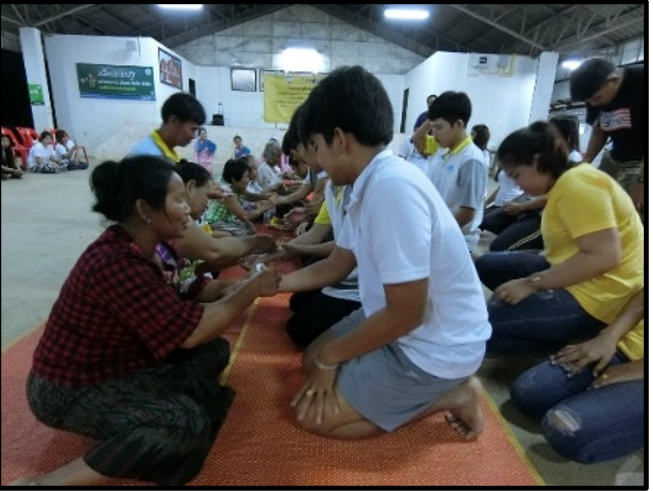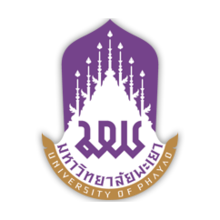Way of Life and Adaptation of Isan Migrants: A Case Study of Ban Cho Lo, Na Suan Sub-District, Si Sawat District, Kanchanaburi Province
Keywords:
Way of life, Isan Adaptation, Isan cultureAbstract
This research aimed to study the way of life and the adaptation of Isan migrants in the area of Ban Cho Lo, Na Suan Sub-district, Si Sawat District, Kanchanaburi using a qualitative research method, applied research methods in anthropology. The data were collected in 2 specific groups: 3 community leaders, 10 northeastern migrants. by researching relevant documents In-depth, semi-structured interviews Organizing community forums group chat Participatory and non-participatory observation and analyzed the data in a participatory way, the study area was Ban Cho Lo,Na Suan Sub-District, Si Sawat District, Kanchanaburi Province
The results of the research revealed that Ban Cho Lo No. 5, Na Suan Sub-district, Sawat District. Kanchanaburi It is a community in 5 villages in Na Suan Sub-district. In the past, this community was part of Village No. 4, Ban Ongsit, and in 1998 the village was split into Village No. 5, Ban Cho Lo. Most of the community members of the community are thai people who migrated from the northeastern part of thailand in many provinces for example, Buriram, Sisaket, Ubon Ratchathani, Khon Kaen, Loei, Kalasin, Sakon Nakhon, etc. The first group to immigrate into the community was the Kham family who resided in Ubon Ratchathani. At present, members of the Ban Cho Lo community are engaged in farming. Conditions for migration are 1) the need to have more work and income 2) family debt/difficulty; 3) land ownership and land use; 4) fixed income when embarking on a fertile new occupation; and 5) migration for other reasons. social network as for the way of life and adaptation of the Isan people migrating, the Ban Cho Lo community is characterized by many conditions such as society, culture, economy, and the ecology of the community. come for a living Basically, the key is to apply the local culture in the northeastern region.
References
เก็ตถวา บุญปราการ, ปัญญา เทพสิงห์ และ เจตน์สฤษฎิ์ สังขพันธ์. (2560). การนิยามความหมายบั้งไฟจุด และการดำรงอัตลักษณ์วัฒนธรรมของชาวอีสานในประเพณีบุญบั้งไฟในพื้นที่ตำบลภูเขาทอง อำเภอสุคิริน จังหวัดนราธิวาส.
ใน ประชุมวิชาการระดับชาติและนานาชาติ มหาวิทยาลัยภาคตะวันออกเฉียงเหนือ NEUNIC 2017, 21 July 2017 North Eastern University (1479-1491). ขอนแก่น: มหาวิทยาลัยภาคตะวันออกเฉียงเหนือ.
เก็ตถวา บุญปราการ และคณะ. (2559). การดำงอัตลักษณ์วัฒนธรรมของชาวอีสานในพื้นที่ชายแดนใต้: กรณีศึกษาตำบลภูเขาทอง อำเภอสุคิริน จังหวัดนราธิวาส. กรงส่งเสริมวัฒนธรรม กระทรวงวัฒนธรรม.
ดำรงศักดิ์ แก้วเพ็ง. (2555). ชุมชน. สงขลา: นำศิลป์โฆษนาจำกัด.
ดุษฎี อายุวัฒน์ และสมศักดิ์ ศรีสันติสุข. (2536). ผลกระทบของการย้ายถิ่นเข้าสู่เขตเมืองของแรงงานเด็กที่มีต่อภาวะเจริญพันธุ์ (รายงานการวิจัย).
คณะมนุษยศาสตร์และสังคมศาสตร์ มหาวิทยาลัยขอนแก่น: ขอนแก่น.
ดุษฎี อายุวัฒน์. (2549). การย้ายถิ่น: การยังชีพของชนบทอีสาน. มนุษยศาสตร์สังคมศาสตร์, 23(2), 80–111.
ดุษฏี อายุวัฒน์ และคณะ. (2549). ความต้องการความสามารถและทักษะภาษาต่างประเทศของแหล่งงานในภาคตะวันออกเฉียงเหนือ. วารสารวิจัย มหาวิทยาลัยขอนแก่น, 11(4), 328- 339.
นงลักษณ์ รัตนนิตย์. (2529). สาเหตุและผลที่ได้รับจากการอพยพแรงงาน ศึกษาเฉพาะกรณีหมู่บ้านโนนรัง ตำบลก้ามปู อำเภอพยัคฆภูมิพิสัย จังหวัดมหาสารคาม. กรุงเทพฯ: มหาวิทยาลัยธรรมศาสตร์.
นพรัตน์ ไชยชนะ. (2560). การสร้างความเข้มแข็งทางเศรษฐกิจให้กับชุมชนโดยการพัฒนากลุ่มอาชีพบ้านตลุงใต้ ตำบลดอนแสลบ อำเภอห้วยกระเจา จังหวัดกาญจนบุรี. กาญจนบุรี: สถาบันวิจัยและพัฒนา มหาวิทยาลัยราชภัฏกาญจนบุรี.
ปฐม หงส์สุวรรณ. (2560). ประเพณีประดิษฐ์ในชุมชนอีสานลุ่มน้ำโขง. ขอนแก่น: คลังนานาวิทยา.
ปิยพงษ์ บุญกว้าง และ ดุษฎี อายุวัฒน์. (2560). ความมั่นคงของครัวเรือนแรงงานย้ายถิ่นในภาคอีสานไปทำงานต่างประเทศ. วารสารมหาวิทยาลัยนครพนม, 7(2), 108–115.
พรเพ็ญ ปานคำ. (2552). ความอยู่ดีมีสุขของครัวเรือนผู้ย้ายถิ่นอีสาน. (วิทยานิพนธ์ศิลปศาสตรมหาบัณฑิต สาขาวิชาพัฒนาสังคม). ขอนแก่น: มหาวิทยาลัยขอนแก่น.
สุริยา สมุทคุปติ์ และพัฒนา กิติอาษา. (2538). มานุษยวิทยากับโลกาภิวัตน์ ข้อเสนอเบื้องต้นเกี่ยวกับแรงงานข้ามชาติและนักมานุษยวิทยาในบริบทของวัฒนธรรมโลก. นครราชสีมา: มหาวิทยาลัยเทคโนโลยีสุรนารี.
สุกัญญา เบาเนิด. (2549). การสร้างอัตลักษณ์ของคนมอญย้ายถิ่น ศึกษากรณีแรงงานข้ามชาติในจังหวัดสมุทรสาคร. (วิทยานิพนธ์มานุษยวิทยามหาบัณฑิต สาขาวิชามานุษยวิทยา). กรุงเทพฯ: จุฬาลงกรณ์มหาวิทยาลัย.
ภูริณัฐร์ โชติวรรณ. (2559). ปัจจัยทางวัฒนธรรมต่อการอพยพย้ายถิ่นแรงงาน. ใน ประชุมวิชาการระดับชาติ มหาวิทยาลัยราชภัฏกำแพงเพชร ครั้งที่ 3 (73).
วสวัตติ์ สุติญญามณี. (2558). จากชนบทสู่เมือง: ปัจจัยที่มีอิทธิพลต่อและผลกระทบจากการย้ายถิ่น. Kasem Bundit Journal, 16(1), 102-112.
สำนักสถิติแห่งชาติ. (2559). กรุงเทพมหานครสำมะโนประชากรและเคหะ พ.ศ.2558. กรุงเทพฯ: บริษัท เท็กซ์ แอนด์ เจอร์นัล พับลิเคชั่น จำกัด.
อมรทิพย์ แท้เที่ยงธรรม และโกมล ปราชญ์กตัญญู. (2544). การย้ายถิ่นภายในประเทศ : ปัจจัยกำหนดและผลกระทบทางด้านประชากร เศรษฐกิจ สังคม และสิ่งแวดล้อม. การประชุมทางวิชาการของมหาวิทยาลัยเกษตรศาสตร์ ครั้งที่ 39. กระทรวงเกษตรและสหกรณ์:กระทรวงวิทยาศาสตร์เทคโนโลยีและสิ่งแวดล้อม.
Homsbawm, Eric and Terence Ranger. (1983). The Invention of Tradition. Cambridge: Cambridge University Press.
Hunter. (1998). The Validity and Utility of Selection Methods in Personnel Psychology. Psychological Bulletin, 124(2), 262-274.
Keyes, Charles F. (1987). Thailand: Buddhist Kingdom as Modern Nation-State. Boulder, Colorado: Westview Press.
Everett S.Lee. (1966). A theory of migration. USA: Pennsylvania.

Downloads
Published
How to Cite
Issue
Section
License
Copyright (c) 2021 Phayao University

This work is licensed under a Creative Commons Attribution-NonCommercial-NoDerivatives 4.0 International License.
ผู้นิพนธ์ต้องรับผิดชอบข้อความในบทนิพนธ์ของตน มหาวิทยาลัยพะเยาไม่จำเป็นต้องเห็นด้วยกับบทความที่ตีพิมพ์เสมอไป ผู้สนใจสามารถคัดลอก และนำไปใช้ได้ แต่จะต้องขออนุมัติเจ้าของ และได้รับการอนุมัติเป็นลายลักษณ์อักษรก่อน พร้อมกับมีการอ้างอิงและกล่าวคำขอบคุณให้ถูกต้องด้วย
The authors are themselves responsible for their contents. Signed articles may not always reflect the opinion of University of Phayao. The articles can be reproduced and reprinted, provided that permission is given by the authors and acknowledgement must be given.







